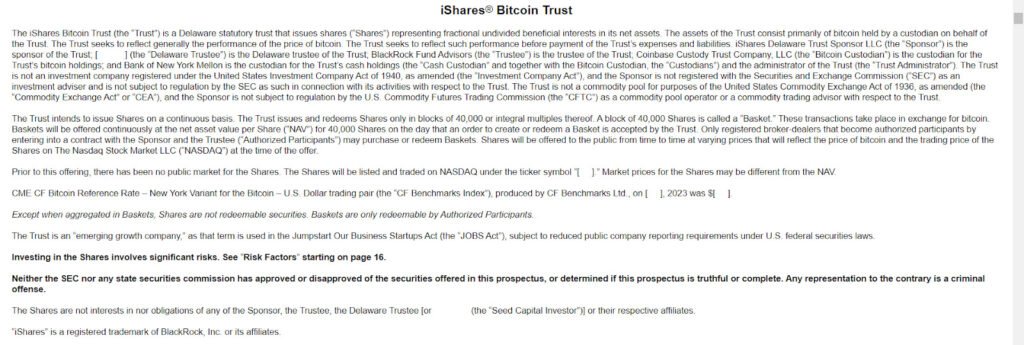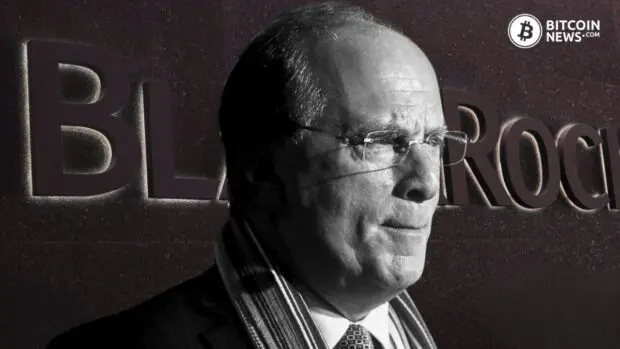Global asset management titan BlackRock Inc. has unveiled critical insights into the risks associated with its eagerly anticipated Spot Bitcoin ETF, currently awaiting SEC approval. The firm expressed concern over effects stablecoins could have on BlackRock Bitcoin ETF. This encompasses various factors, including volatility and operational issues associated with stablecoins.
BlackRock recently submitted a public document to the United States Securities and Exchange Commission (SEC), which primarily focuses on concerns related to stablecoins, particularly Tether (USDT) and Circle (USDC). The company stated:
“While the Trust does not invest in stablecoins, it may nonetheless be exposed to the risks that stablecoins pose for the bitcoin market and other digital asset markets.”
The document underscores the observed volatility in stablecoin values despite mechanisms intended to maintain stability. BlackRock emphasizes that such volatility has historically influenced BTC prices, raising questions about potential impacts on the performance of the Spot Bitcoin ETF once approved.

BlackRock Bitcoin ETF: Tether and Circle Identified as Risks
Specifically naming Tether and Circle, BlackRock recognizes them as potential risks to the Spot Bitcoin ETF. Concerns extend beyond volatility, touching upon issues of improper issuance and insufficient backing, potentially leading to artificial demand for Bitcoin and inflation of its price. BlackRock stated:
“In addition, some have argued that some stablecoins, particularly Tether, are improperly issued without sufficient backing in a way that, when the stablecoin is used to pay for bitcoin, could cause artificial rather than genuine demand for bitcoin, artificially inflating the price of bitcoin.”
BlackRock acknowledges the foundational role of stablecoins in the broader digital asset market. The iShare Bitcoin ETF document highlights the fundamental liquidity provided by stablecoins, emphasizing their critical impact on various digital assets, including Bitcoin, adding:
“Because a large portion of the digital asset market still depends on stablecoins such as Tether and USDC, there is a risk that a disorderly de-pegging or a run on Tether or USDC could lead to dramatic market volatility in digital assets more broadly.”
Tether’s Troubles
BlackRock also mentions the historical events that further raise doubts about Tether’s USD reserves. Notably, on February 17, 2021, the New York Attorney General’s agreement imposed a $18.5 million penalty on Tether’s operators. This resulted from false statements about assets backing Tether, raising concerns about the stability of its USD reserves. The document further pointed out:
“On October 15, 2021, the CFTC announced a settlement with Tether’s operators in which they agreed to pay $42.5 million in fines to settle charges that, among others, Tether’s claims that it maintained sufficient U.S. dollar reserves to back every Tether stablecoin in circulation with the “equivalent amount of corresponding fiat currency” held by Tether were untrue.”
Circle’s De-Peg Event
Notably, Circle has also faced serious troubles in the past. A relevant de-peg event involving Circle’s token occurred on March 10, 2023. Circle Internet Financial’s disclosure that $3.3 billion of USDC reserves were held at a bank in FDIC receivership led to USDC falling below $1. This incident emphasizes the reliance of stablecoins on the U.S. banking system and treasuries, posing a potential threat to the ETF’s value.










